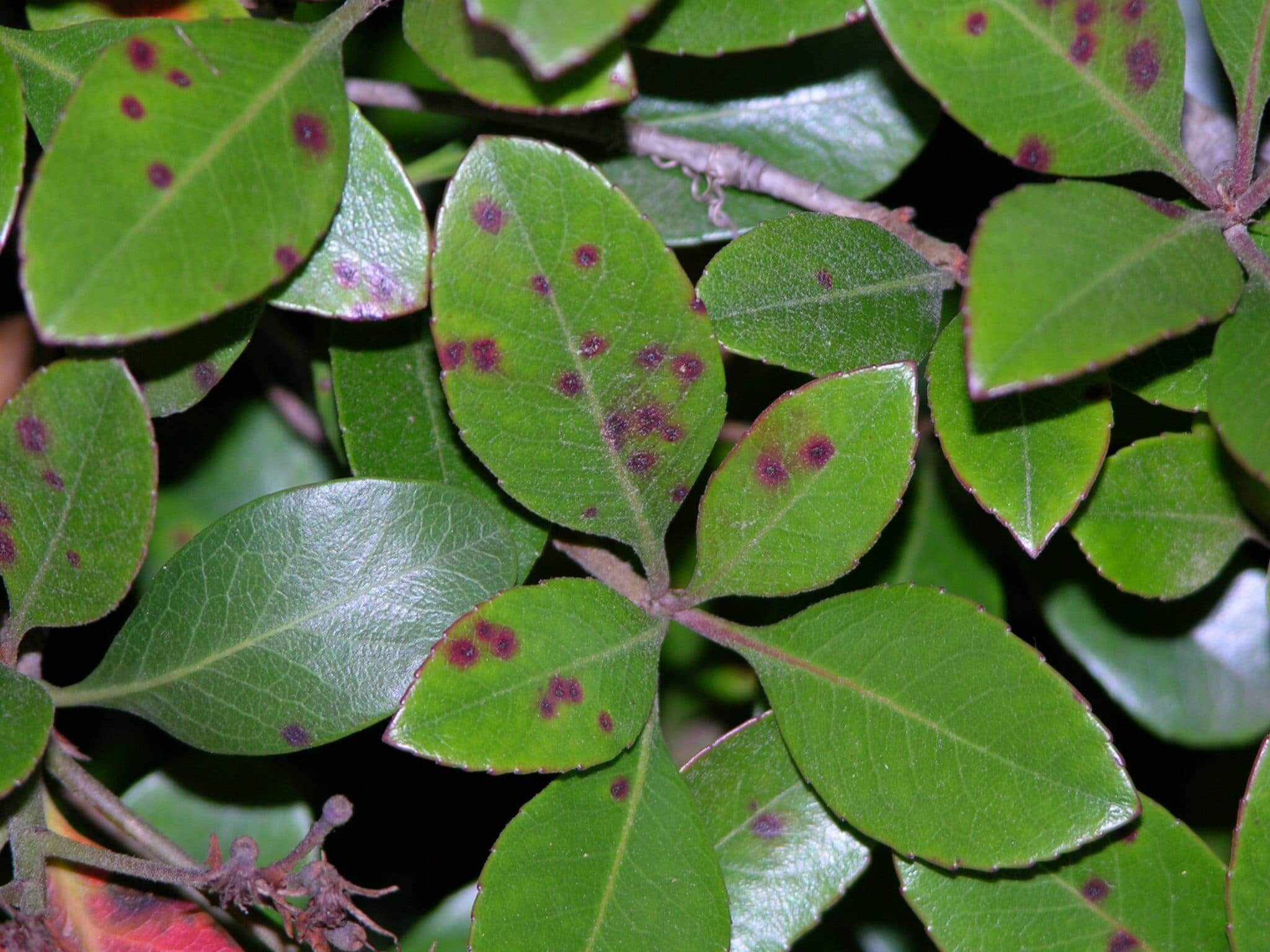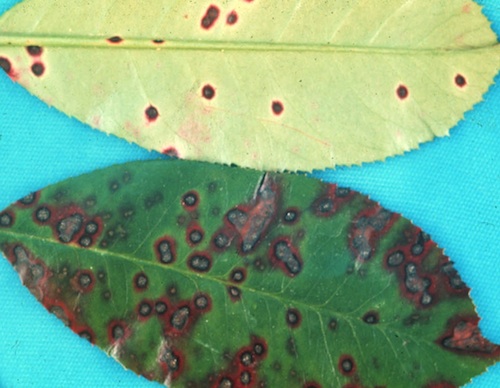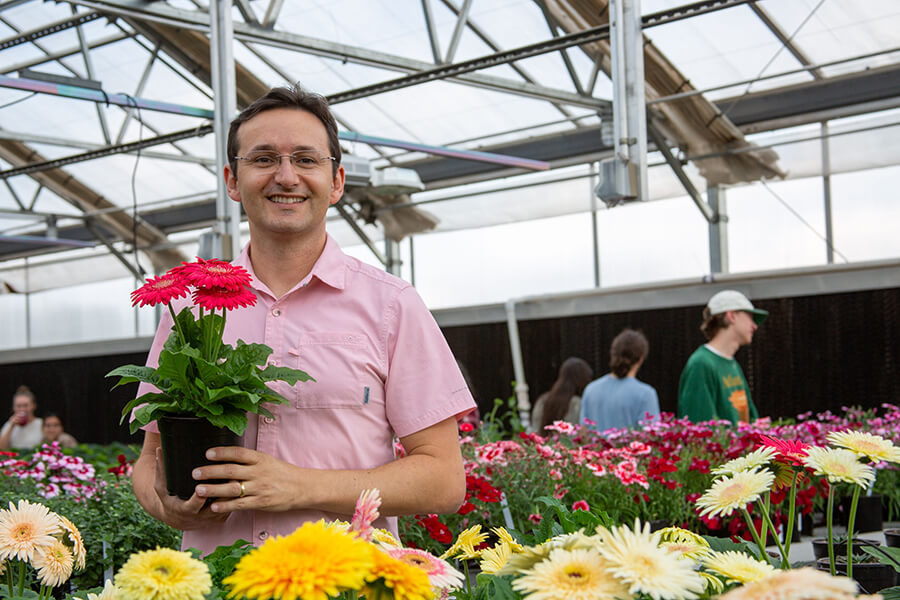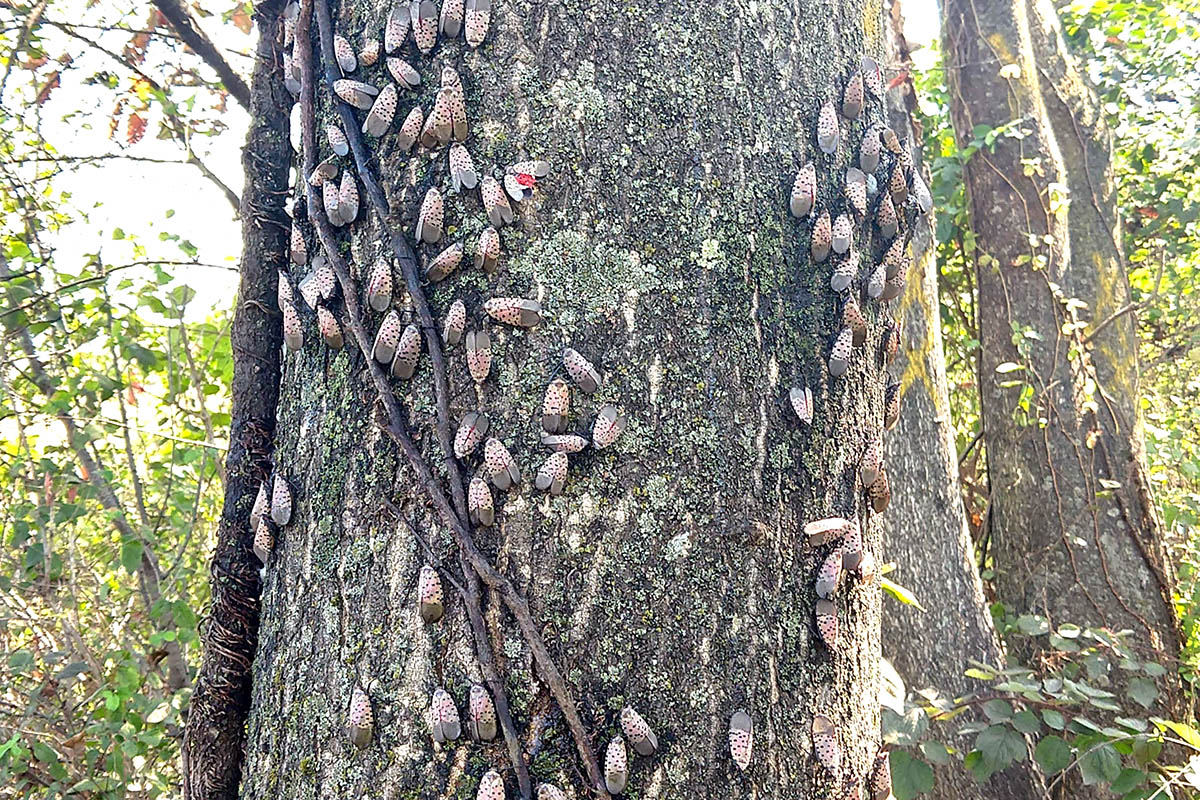
Excessive rain signals another a bad year for leaf spot diseases on landscape trees and shrubs.
The leaf spotting that affects pear trees, including both edible pears and ornamental Bradford types, is caused by a fungal disease known as Entomosporium leaf spot. This disease also affects related shrubs such as Indian hawthorn and red tip photinia.
Bug-like spores
The name of this disease comes from the fact that the spores look like tiny insects under a microscope. "Entomosporium" literally means insect-like spores.
Leaf spot symptoms may vary with host plants. At first, leaf spots are small, purplish and round. As the spots get older, they become sunken with a white-to-grayish center and a raised dark purple-to-black border. Within the center of each spot, the fungus produces a raised black, pimple-like fruiting structure.
Some leaf spots, such as those on Bradford pear, may be small and circular with a black, oily appearance. Each leaf spot is capable of producing hundreds of spores. Extensive defoliation — or dropping of leaves — will occur if the leaf spots are numerous.
Pear trees that are otherwise healthy can tolerate a significant amount of leaf spotting and premature leaf drop. But shrubs such as Indian hawthorn and red tip photinia can become severely infected, drop most of their leaves, and potentially die if the problem recurs annually.
Leaf spot loves wetness
Infection is favored by poor air circulation and prolonged periods of leaf wetness — like we saw last spring. Depending on the weather, some years are worse than others for leaf spot disease. By mid-April, northwest Georgia had already received from 5 to 10 inches of surplus rain this year-to-date compared to the average.
Plants that have very dense branches and a tight leaf canopy take longer to dry out when wet. Selective pruning can open up the canopy to more sunlight, increase air circulation throughout the plant and reduce disease incidence.

Increasing plant spacing, especially between hawthorns and red tips, can also help with air circulation and leaf drying. Avoid wetting leaves unnecessarily with overhead or sprinkler irrigation systems. If supplemental watering is needed, direct water toward the roots rather than the leaves, and water early in the morning so that the foliage can dry out more quickly.
Spray in spring
Severely infected leaves that have fallen on the ground should be removed from the area and destroyed. Infection occurs primarily in the milder weather of the spring.
Fungicides are most effective during this time. However, once the leaves are showing disease spots, the damage is already done and fungicides provide little benefit to plants. The key to managing Entomosporium is to spray as soon as you begin to see leaf spots on new leaf growth in early spring and prevent spread of the disease before it becomes more severe.
Protective fungicide applications can be applied when leaves emerge in early spring and continue at 10- to 14-day intervals throughout the growing season. Fungicides that contain chlorothalonil or propiconazole are effective on Entomosporium leaf spot and many other leaf spot diseases. Be sure to read and follow the application rates and safety precautions listed on the label.
Certain varieties of trees and shrubs are more susceptible than others. Do your homework before planting pears and hawthorns in the landscape to select the most disease-resistant variety. Hydrangea plants are also susceptible to fungal leaf spot disease. Resistant varieties aren’t totally immune to these leaf spot diseases, but they won’t require as much work to keep them looking decent. Unfortunately, if you like red tip photinias, there really aren’t any good varieties on the market. For the most part, nurseries and landscapers have discontinued using fraser photinia (red tip) because of this leaf spot disease.
For more information and free farm, lawn or garden publications or to find your local University of Georgia Cooperative Extension agent, visit extension.uga.edu.






